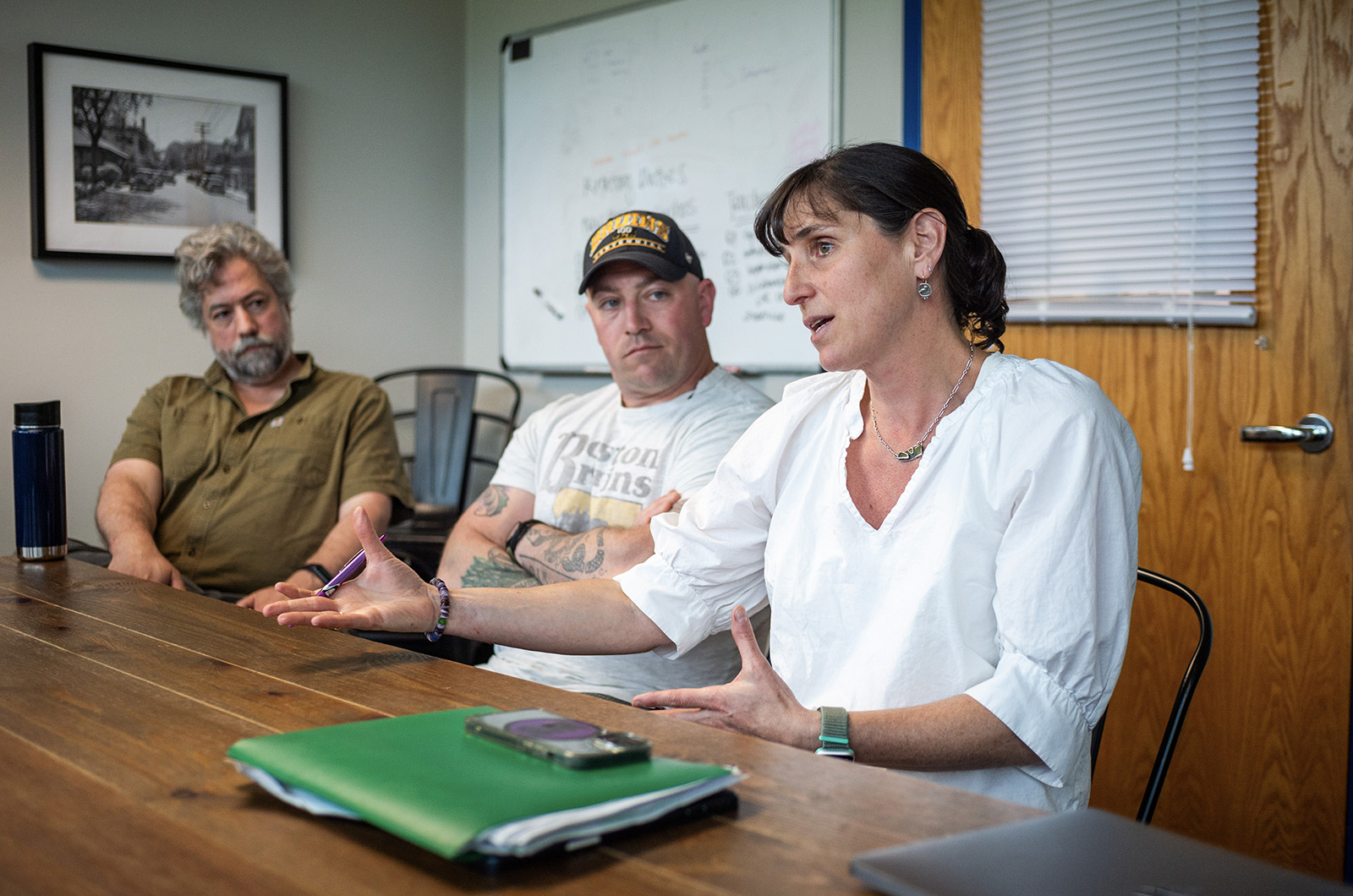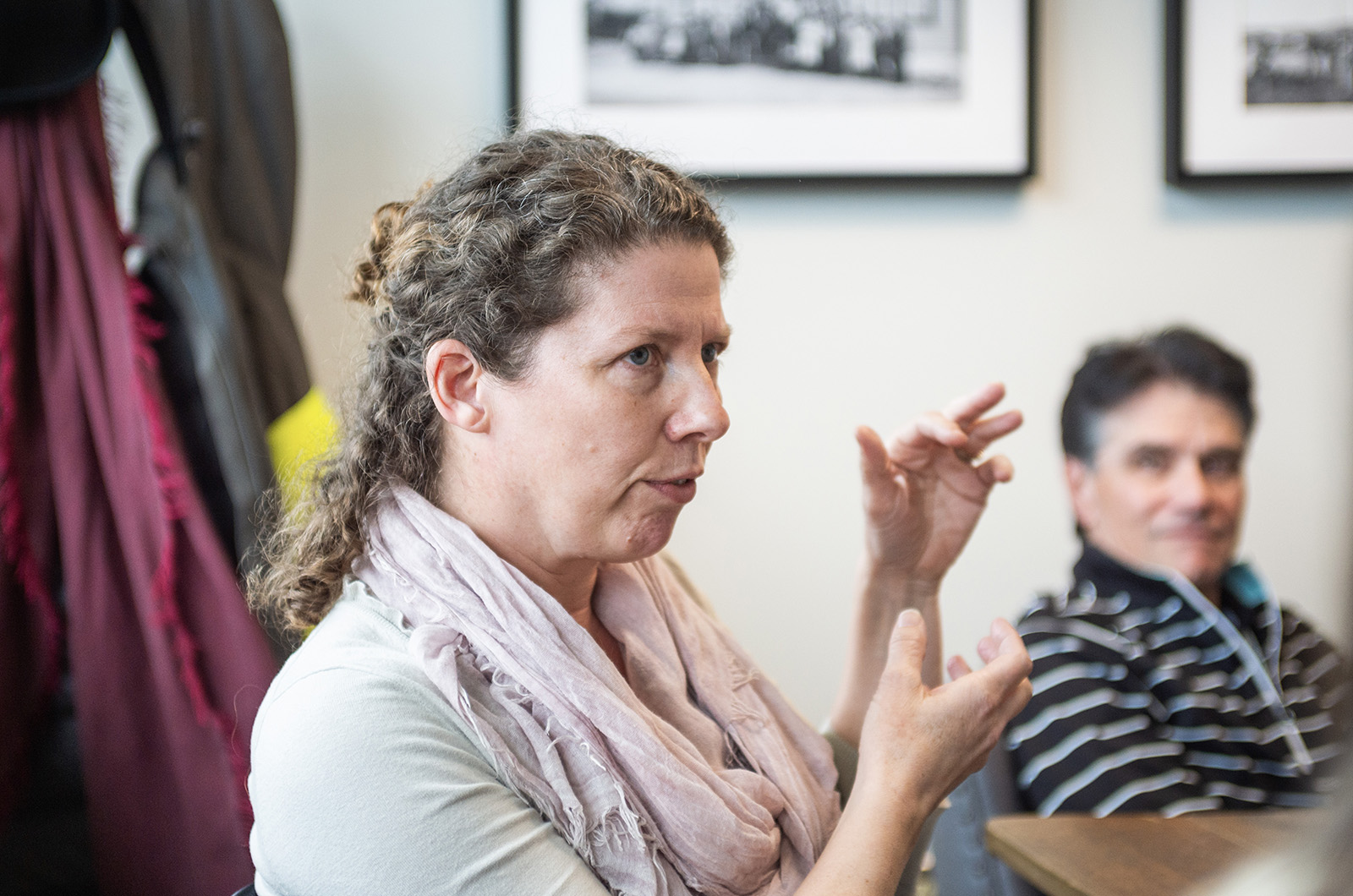When Covid-19 restrictions forced Island schools to go dark in early 2020, thousands of video screens lit up as teachers took their lessons online and isolated children reached out to each other through cell phones and social media — technology that became a lifeline for their disconnected community.
Four years later, though, personal devices have become pervasive both in and out of the classroom, and educators say they are struggling for students’ attention in a teaching environment filled with onscreen distractions.
The Gazette recently sat down with a group of high school teachers during their midday flex period — an hour-plus block of discretionary time — to talk about what it is like to be a teacher today, the challenges they face and how they look to connect with their students in the digitalized, post-pandemic environment.
The teachers were all quick to say that teenagers at the high school are still curious and creative, but that the constant use of cell phones and other personal screens is fracturing students’ attention, hampering their education and inhibiting social development.
As a corrective, this summer the high school committee will vote on an updated school handbook that expressly prohibits students from using their personal devices throughout the school day.
Under the new policy, students will be issued identical, web-based Chromebooks at the start of the school year, and cell phones will be placed in locking pouches. Students will keep the pouched phones in their possession, but can only unlock them at specific locations when leaving the campus.
The hope is that without the constant urge to check their screens during the day, the students will be more focused on their education and in talking with each other.
According to English teacher Kathryn Hennigan, the mass lunge for phones at the end of every class period represents a room full of lost opportunities. That time, she said, used to be a chance to make informal connections with her students.
“I feel like that’s where my relationship-building needs to happen,” Ms. Hennigan said. “We’d still be talking . . . while we packed up and got ready to go.”

Ms. Hennigan also pointed to the damaging effects social media can have on students’ self-esteem, and how that — combined with grade anxiety — can play out in the classroom.
“They’re consuming information about whether they’re good enough, all the time,” she said. “My classes used to be pretty discussion-based, and I still try to make them discussion-based, but there is such a lack of confidence in the whole group discussion.”
World languages teacher Erin Slossberg agreed that there is a new reluctance among students to exchange views in person.
“They’re just so quiet,” said Ms. Slossberg, who also acknowledged that cell phone use is not just a teenage obsession.
“We’re all victims of these devices, and we’d be hard pressed to find anybody who isn’t tied to it . . . for the alarms, for the calendar, for the schedule, for myriad reasons,” she said. “But we have to help this generation navigate how to be together, because I feel like they’re very isolated, even when they’re in a space together.”
“And I think when self-confidence goes down, then empathy goes down,” she added.
On the plus side, Ms. Hennigan said she feels students today are often more insightful.
“They, ironically, have a real grasp on the language of presence and mindfulness and the importance of attending to life in front of them,” she wrote in a follow-up email.
“When in deep conversation, students are incredibly observant and thoughtful and able to offer reasonable solutions and insights into their own lived experiences,” Ms. Hennigan wrote. “I am always inspired by the extent to which they have a grasp on the big picture in a way I certainly never did as a teenager.”
The challenge, she and other teachers said, is to overcome the screen-based distractions that pull students away from their classwork and community.
Cheating has also become a concern — not only in high-stakes testing, but in everyday lessons as well.
Some students have become so accustomed to internet tools that they won’t do even the simplest assignments themselves, science and Advanced Placement science teacher Heather Lochridge said.
“I am amazed at how much effort a student will put into not doing their work, into [using the ChatGPT artificial intelligence tool for] their assignments or finding the answer on Google rather than reading the very, very eighth-grade-level reading paragraph that I have curated for them,” Ms. Lochridge said.
Although the new technology policies won’t go into effect until the fall, many teachers have already pulled back on computer use in class. Part of the difficulty with mixed technological devices, they said, is that they can’t tell what the students are looking at unless they walk around the room checking screen after screen.
“It’s a challenging battle for an educator, and there is no way I can compete with a computer game,” Ms. Lochridge said. “The best neuroscientists in the world are working on engaging people through these games . . . We cannot compete with that.”
With every student using school-issued Chromebooks, teachers will be able to monitor all of the screens from their own laptops to make sure nobody wanders off task.
As the new handbook nears completion, guidance counselor Sheila McHugh-Hazell said it is essential to give students a role in crafting the new policy on devices by asking where they think it could go wrong and how it could work more effectively.
“When you give [students] the voice of, ‘Okay, help us make this a better system,’ then it’s not just like ‘You’re taking stuff away from me and I don’t like it,’” Ms. McHugh-Hazell said.
The teachers’ commitment to students remains unchanged amid the challenges, they told the Gazette.
“It’s part of our job to find out what interests them, and push them . . . to uncover more,” math teacher Michael Innes said.










Comments (3)
Comments
Comment policy »